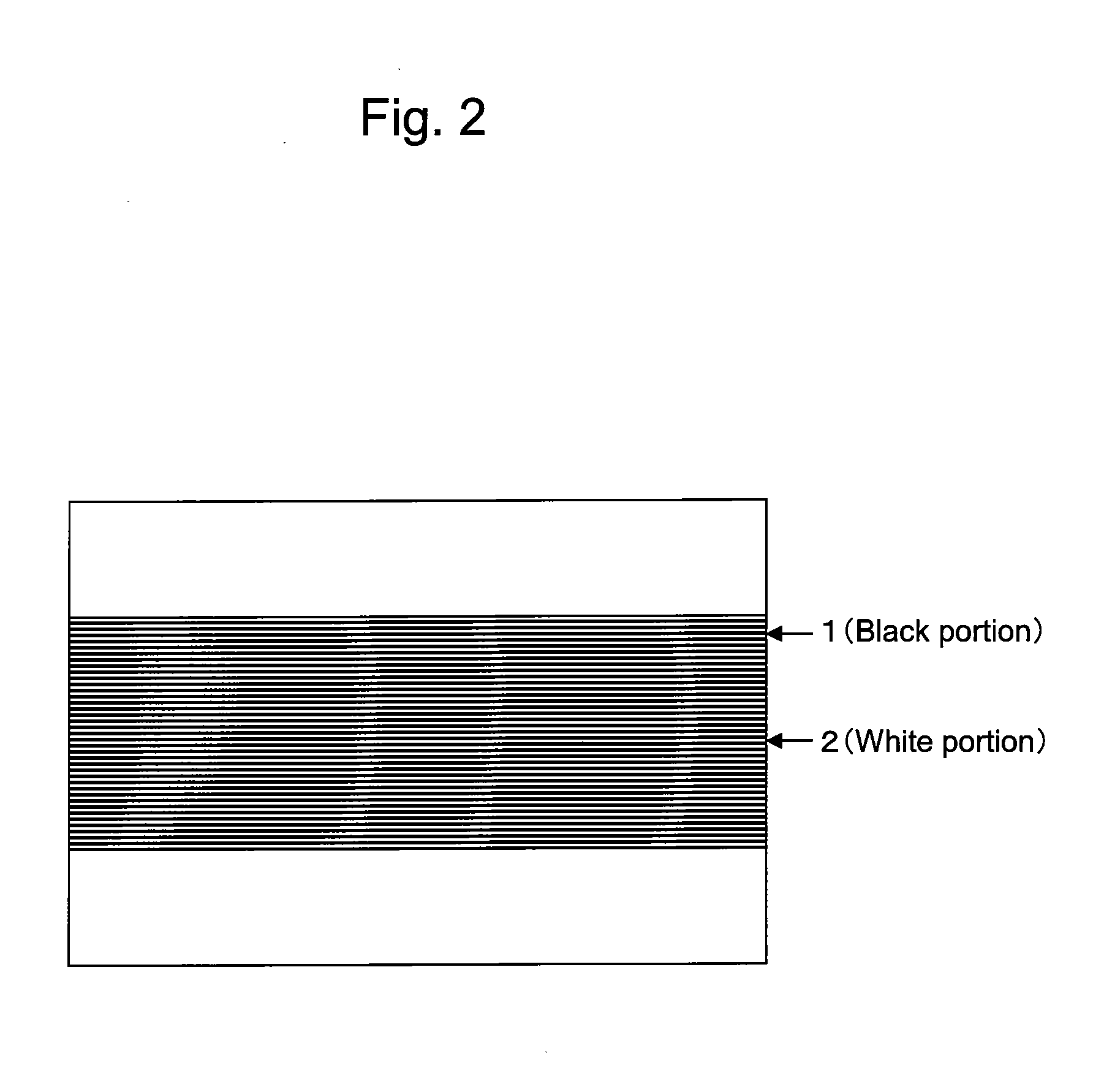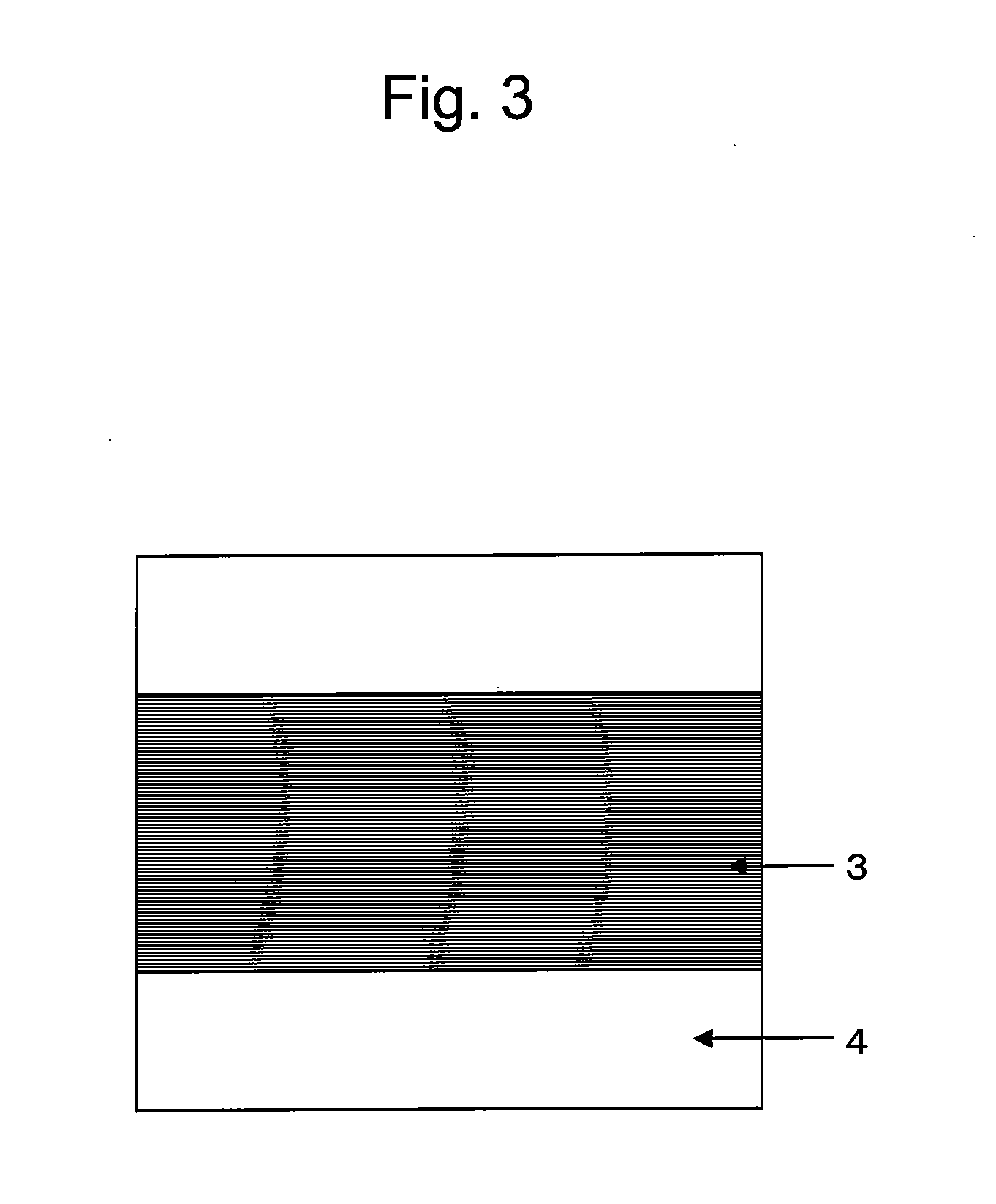Molding material, prepreg and fiber-reinforced composite material, and method for producing fiber-reinforced molding substrate
a technology of reinforced composite materials and molding substrates, which is applied in the direction of yarn, transportation and packaging, coatings, etc., can solve the problems of difficult impregnation of resin into reinforcing fiber bundles, material economic efficiency and productivity problems, and achieve satisfactory dispersion of reinforcing fibers, enhanced economic efficiency and productivity, and excellent dynamic properties
- Summary
- Abstract
- Description
- Claims
- Application Information
AI Technical Summary
Benefits of technology
Problems solved by technology
Method used
Image
Examples
reference example 1
Preparation of Polyphenylene Sulfide Prepolymer
[0310]118 kg of 47.5% Sodium hydrosulfide (1,000 moles), 42.3 kg of 96% sodium hydroxide (1,014 moles), 163 kg of N-methyl-2-pyrrolidone (hereafter occasionally abbreviated as “NMP,” 1,646 moles), 24.6 kg of sodium acetate (300 moles), and 150 kg of ion exchanged water were loaded in a 1,000-litter autoclave equipped with an agitator, the inside of the autoclave was gradually heated to 240° C. over the period of 3 hours at the ordinary pressure while introducing nitrogen, 211 kg of water and 4 kg of NMP were removed by distillation via a rectifying column, and the reaction vessel was then cooled to 160° C. 0.02 moles of hydrogen sulfide per mole of a sulfur component that had been loaded during this liquid removing operation was dispersed to the outside of the reaction system.
[0311]Subsequently, 147 kg of p-dichlorobenzene (1,004 moles) and 129 kg of NMP (1,300 moles) were added, and the reaction vessel was hermetically sealed under the...
reference example 2
[0319]2,383 g of 47% Sodium hydrosulfide (20.0 moles) (Sankyo Chemical Co., Ltd.), 831 g of 96% sodium hydroxide (19.9 moles), 3,960 g of NMP (40.0 moles), and 3,000 g of ion exchanged water were loaded into a 20-litter autoclave equipped with an agitator and a valve at the bottom, the inside of the autoclave was gradually heated to 225° C. over the period of 3 hours at the ordinary pressure while introducing nitrogen, 4,200 g of water and 80 g of NMP were removed by distillation, and the reaction vessel was then cooled to 160° C. The amount of moisture remaining in the reaction system was 0.17 moles per mole of the loaded alkali metal sulfide. The amount of hydrogen sulfide dispersed was 0.021 moles per mole of the loaded alkali metal sulfide.
[0320]Subsequently, 2,942 g of p-dichlorobenzene (20.0 moles, Sigma-Aldrich) and 1,515 g of NMP (15.3 moles) were added, and the reaction vessel was hermetically sealed under the nitrogen gas atmosphere. Thereafter, the temperature was raised ...
reference example 3
Preparation of Polyphenylene Sulfide Prepolymer 1
[0323]16.54 kg of 47.5% Sodium hydrosulfide (140 moles), 5.92 kg of 96% sodium hydroxide (142 moles), 22.88 kg of N-methyl-2-pyrrolidone (hereafter occasionally abbreviated as “NMP,” 232 moles), 3.44 kg of sodium acetate (42 moles), and 21 kg of ion exchanged water were loaded in a 150-litter autoclave equipped with an agitator, the inside of the autoclave was gradually heated to 240° C. over the period of about 3 hours at the ordinary pressure while introducing nitrogen, 30 kg of water and 550 g of NMP were removed by distillation via a rectifying column, and the reaction vessel was then cooled to 160° C. 0.02 moles of hydrogen sulfide per mole of a sulfur component that had been loaded during this liquid removing operation was dispersed to the outside of the reaction system.
[0324]Subsequently, 20.6 kg of p-dichlorobenzene (140.6 moles) and 18 kg of NMP (182 moles) were added, and the reaction vessel was hermetically sealed under the...
PUM
| Property | Measurement | Unit |
|---|---|---|
| melting point | aaaaa | aaaaa |
| temperature | aaaaa | aaaaa |
| temperature | aaaaa | aaaaa |
Abstract
Description
Claims
Application Information
 Login to View More
Login to View More - R&D
- Intellectual Property
- Life Sciences
- Materials
- Tech Scout
- Unparalleled Data Quality
- Higher Quality Content
- 60% Fewer Hallucinations
Browse by: Latest US Patents, China's latest patents, Technical Efficacy Thesaurus, Application Domain, Technology Topic, Popular Technical Reports.
© 2025 PatSnap. All rights reserved.Legal|Privacy policy|Modern Slavery Act Transparency Statement|Sitemap|About US| Contact US: help@patsnap.com



